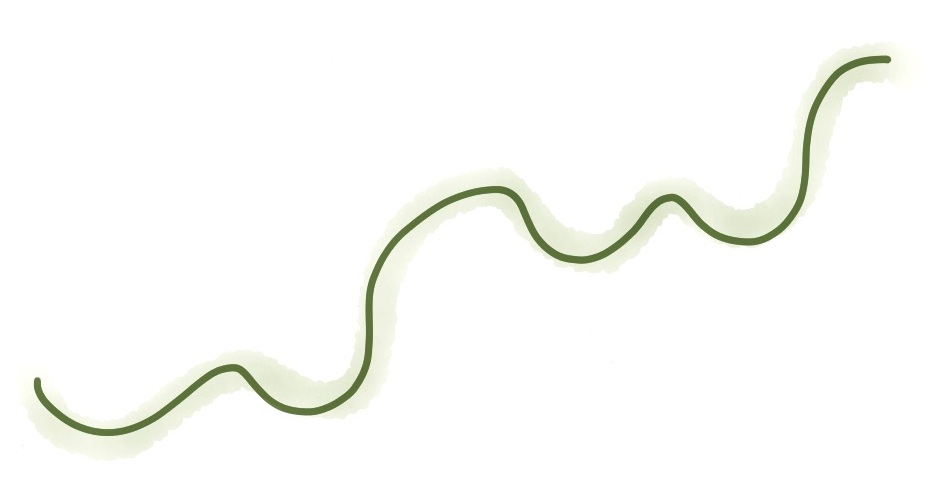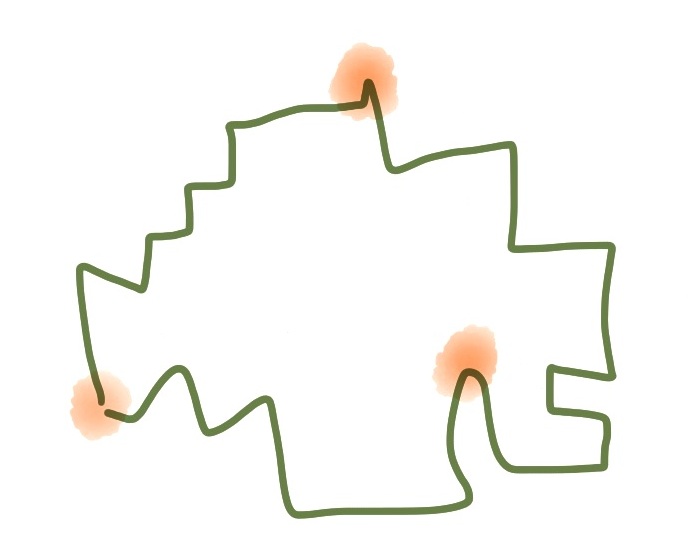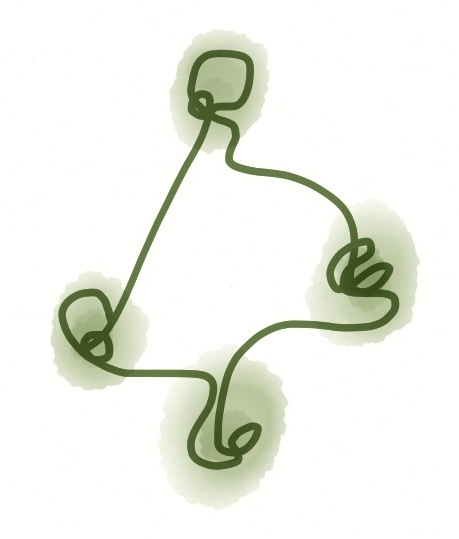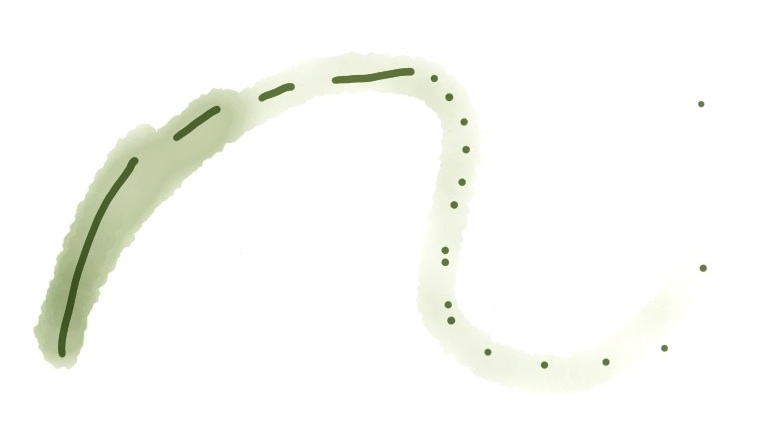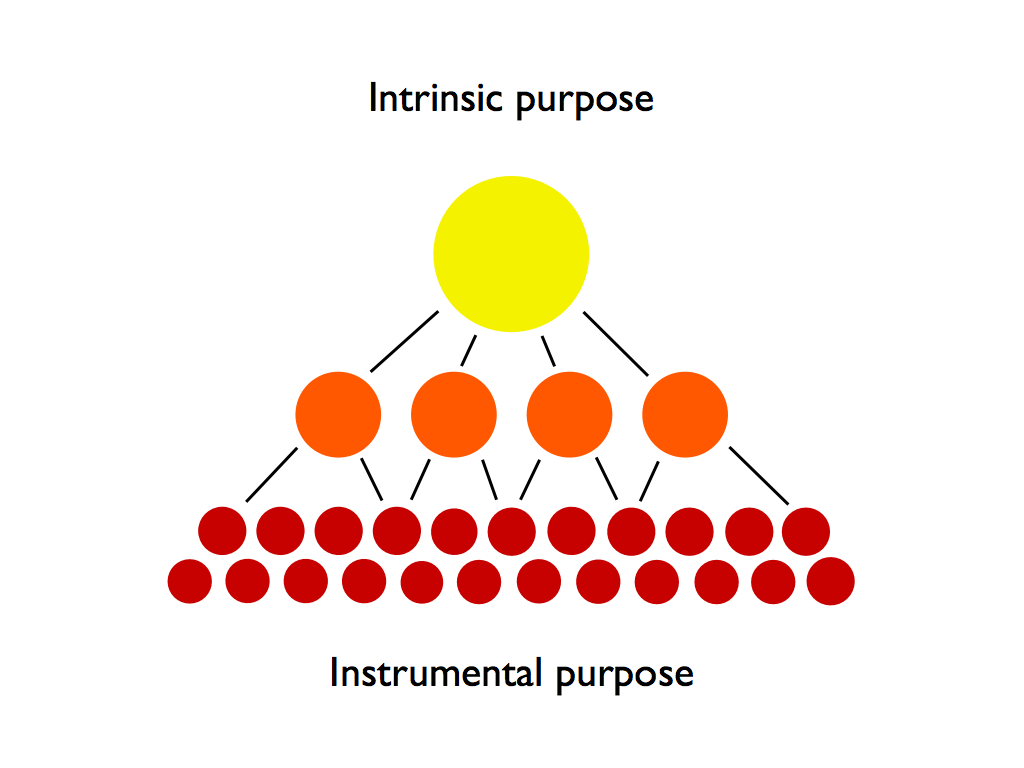To get where we want to go, a clear purpose – our sense of direction – is everything. If we don’t know where we are going, and why were are going there, anywhere will do.
Let’s use the metaphor of a city bike tour. The organizers have come together because they know they want to offer something. Their overall purpose is to offer an experience that allows citizens to see their city in a new way, to feel more connected to the city. They imagine that after the bike tour, the impact on citizens is inspiration to find new ways to participate in their city, to simply enjoy it and work to improve it. To pull off a good event, the organizers then need to dig deeper, more specifically, into the purposes of the bike tour, and the purposes of the events that will happen along the way. They have a few options.
They could explore the bike trails along the river the city:
They could visit the best three diners in the city:
They could visit the top four parks:
They could simply head out, unsure of what they would do:
There is nothing wrong with any of the above options; they all meet the overall, ‘intrinsic’ purpose of going on a bike tour to see the city in new ways. There is another layer of purposes that needs to be held: the instrumental purposes of each stop along the way. Once they are known, they will start a dance with the overall purpose and they inform each other. For Steve McIntosh, intrinsic and instrumental purposes are the nature of evolutionary progress. This dynamic takes place even when designing a bike tour of the city.
Knowing what the purpose of each stop along the way is instrumental. If unknown, we lose the overall purpose.
Designing a process without purpose in mind – whether the overall or instrumental purposes of the stops along the way – is not design. It is exploration. Both of these are valuable activities – when aligned with purpose. Sometimes exploration is the purpose…
A clear invitation needs clear purposes.
When the organizers of the bike tour have a clear purposes, they will be able to craft a clear invitation to put out into the world; people to have a clear choice of what kind of bike tour to sign up for. The next layer of purposes are needed – the overall purpose is not enough. For example, for the river valley trail tour, there could be radically different offerings that meet the overall purpose:
- Ride the trails of your city river with friends and family. You will have all the support you need along the way, from washrooms, snacks and technical support. Ride the whole thing, or part. The choice is up to you. See the city from a new angle!
- Learn about the wild in our city. On our bikes, we will take a day to ride the length of city trails with stops along the way to learn about geologic and natural features of our land from local experts. Lunch and bikes provided.
- Explore the wilderness in our city. Bring your journal and your geocaching skills to explore, and navigate, your self and your city. Bring your own lunch and be prepared to look after your own technological troubles. Washrooms will be provided.
The instrumental purposes of each of these invitations are very different. The first is about providing an opportunity for families to explore the river trail system in a relaxed and supportive way. The second event is about offering a traditional learning environment in the natural habitat, learning specific things about nature in the city from experts. The third is a way for individuals to spend time alone in the valley, learning both about themselves and nature. The instrumental purposes shape the overall purpose.
Each of these invitations has a different vibe to which people respond. Knowing the purposes mean we know what we are inviting.
Why the metaphor?
While designing social social habitats, I find it useful to try metaphors on for size, to tease out purposes. I used the metaphor of a city bike tour to figure out what I had to say about purposes here. (I had an email this morning about organizing a bike tour this am!) It helped me reach for the ‘meta’, high level information I was looking for to inform a discussion in a hosting team I am part of, about the need for purpose to be articulated sooner than later.
Metaphor is a great way to explore and define purpose. And once purpose is known, metaphor is an effective way to test if the design is aligned with purpose, a good way to look sideways at our work. Is the purpose of the bike tour more like a fun run, a traditional classroom, or a personal wilderness learning journey?
A note on designing with purpose vs exploring for purpose.
If we start organizing a bike tour by laying out the routes and sites and people we want to use out before us, and start putting them together in ways that make sense to us, we are exploring. We are figuring out what needs to be figured out and in this journey we may find the purpose of the design, but the purpose comes at the end. What have designed only if what we craft reflects the purpose that came at the end.
There is a big trap in designing social processes: while exploring we may think we are designing and miss knowing purpose, or neglect to test our work against the purpose. If we gather a series of tools and methodologies that feel good together and assemble them into a process, we miss the mark because we have not connected to the purpose of the gathering, and the purposes of each part of the gathering. We can even fall into the trap of naming outcomes that will come from the process and feel good about those. It may look good, and feel good – and be false.
Design takes place when purpose is in mind; activities are chosen because they meet the purpose.
WARNING: Purpose can be hard to find.
It is tough slogging to find purpose, as though ‘purpose’ is purposely making itself hard to find. That’s because it’s important.
One of the reasons we fall into the trap of thinking we are designing when we are not is because it is easy and familiar. It is easy to pull out the familiar ideas, or the things we are dying to try, lay out all the ideas and put them to work in ways that feel good. And if after our time exploring we nail down the overall purpose of the event, the smaller purposes are then hard to pin down. It seems to never end, but the pursuit of purpose is necessary for the ultimate design to serve well.
I offer this meta view of purpose as a window into intentional design.
